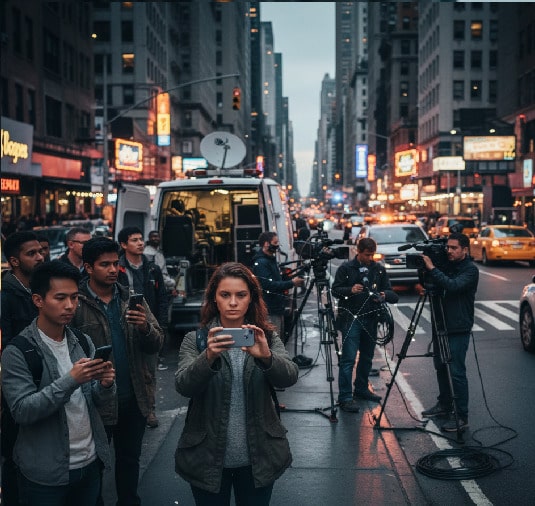For many travelers, the Jeju Yeondong room salon (제주 연동 룸싸롱) is more than just a place for relaxation, it is a quick getaway into the island’s evolving lifestyle. Selling point of these salons is its combination of tradition with modern leisure. It offer spaces where people connect, rejuvenate, and enjoy shared experiences.
The popularity of such establishments showcase how local culture continues to adapt while retaining its roots. In a similar way, the world of journalism is adapting, where smartphones and citizen reporters are reshaping how breaking stories reach the public.
Democratization of News Reporting
Traditional news outlets once controlled the flow of breaking stories. As time passes by, this was shattered by the constant growth and popularity of smartphones. Indeed, it reshaped how information is shared. Everyday citizens now have the ability to capture unfolding events in real time, often beating professional journalists to the scene. Social media platforms act as instant distribution channels, allowing photos, videos, and updates to cross borders within seconds.
This immediacy disrupts the conventional timelines of news reporting, forcing traditional media to adapt to a faster, more decentralized news cycle. The result, a world where citizen journalism and mobile reporting play a critical role in shaping public awareness.
Jeju Yeondong Room Salon and Community Storytelling
Just as salons bring people together to share stories and experiences, citizen journalism thrives on the power of community participation. A simple video recorded by a bystander or a photo uploaded to social media can spark global conversations.
These firsthand accounts often provide raw, unfiltered perspectives that mainstream outlets may overlook, adding depth and diversity to public discourse.
By democratizing who gets to report the news, citizen journalism and grassroots media ensure that more voices are heard and more realities are represented in the global narrative.
Benefits and Limitations of Smartphone Journalism

The accessibility of smartphone reporting has opened the door for more voices to shape conversations, but it also introduces challenges around accuracy and context. While professional journalists follow strict verification standards to ensure credibility, citizen journalism may be considered in the opposite side of the stick.
Because of the lack of guidelines, and quality control, news shared can sometimes spread incomplete, biased, or unverified information at rapid speed. This creates both opportunities and risks in today’s media environment.
The key lies in finding balance between traditional media and citizen reporters. In doing so, they can complement one another by combining professional fact-checking with on-the-ground immediacy. Together, they strengthen public understanding, media trust, and the overall quality of digital news reporting.
How can We Expect People to Consume News in the Future?
As technology advances, citizen journalism is set to remain a powerful force in shaping public narratives and global awareness. Modern smartphones are equipped with high-resolution cameras. These features have enabled people to live stream, and share in an instant, hence, transforming everyday people into active storytellers.
What was once a passive audience is now an engaged community that documents, shares, and even challenges official accounts of events in real time. This shift underscores how digital media, mobile reporting, and traditional journalism are redefining the flow of information, ensuring that diverse voices continue to influence conversations on a global scale.
